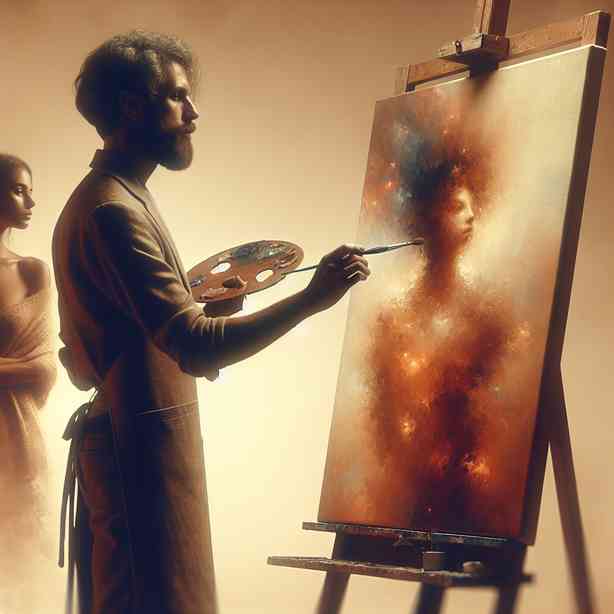
As artists navigate their creative journeys, they often encounter a pivotal question: Should they explain their art? This contemplative inquiry can emerge from various reflections on the nature of art, the role of the artist, and the relationship between a work of art and its audience. Over time, many artists find themselves gravitating towards a more instinctive, unspoken connection to their creations rather than verbalizing their intentions or meanings. This shift does not signify a retreat from the act of sharing—rather, it marks a deeper understanding of how art operates within the human experience.
Art, in its purest form, is an expression of human emotion, thought, and experience. The act of creation serves as a conduit for feelings that may be ineffable. When artists produce works, they often channel their inner thoughts, frustrations, joys, and reflections into a tangible format that can reach others on emotional and intellectual levels. The essence of art is that it invites subjective interpretation; what one person perceives through a piece may differ vastly from another’s insight. Thus, the impulse to explain art can sometimes undermine the personal journey that each viewer embarks on upon encountering a work.
There exists an argument among artists that explaining one’s art can create limitations. By articulating intentions or themes, an artist risks imposing a fixed narrative upon their work, thereby constraining its meaning to a singular interpretation. This can be counterproductive, as art inherently thrives on multiplicity—exploitation of diverse perspectives and personal experiences enriches the connection between the artwork and its audience. What resonates deeply with one viewer may elude another; this fluidity is part of art’s enchanting power.
Moreover, verbal explanations can inadvertently draw attention away from the emotional resonance that art seeks to evoke. For instance, a painting full of vibrant colors and dynamic forms may elicit feelings of joy, nostalgia, or even heartbreak. The viewer’s experiential response is often far more profound and stimulating than the context provided by the artist. Engaging with the artwork without prior explanation allows individuals to interact authentically, lending their interpretations based on personal experiences and emotional responses rather than on the constraints of predetermined meanings.
Many artists find that stepping away from explanations can lead to more profound connections with their audiences. In a world saturated with information, a work of art can stand out more effectively as a sensory experience rather than a didactic tool. Viewers are encouraged to engage on their own terms, facilitating a more organic dialogue between the artwork and the observer. This lack of explanation invites interpretations that are rich, diverse, and often surprising—ultimately revealing the layers embedded within the work that may not have been initially apparent.
Additionally, the contemporary art landscape has evolved significantly with the rise of social media and digital platforms. Today, artists often share their work alongside personal anecdotes or visual documentation of their creative processes. Despite this immediacy, the depth of art experience can sometimes become secondary to the curated persona artists present online. The act of oversharing, while tempting, can dilute the significance of the art itself. In this age of information overload, many artists choose to preserve a sense of mystery—a quietude that enables viewers to rediscover the art on a personal level without the artist’s voice dominating the narrative.
Furthermore, not explaining one’s art can also be a protective measure for artists. Art is an intimate and vulnerable act, and sharing the inner workings of one’s creative process can feel exposing and daunting. By choosing silence over explanation, artists establish boundaries that allow them to maintain a level of security and introspection. It becomes a space where the artist can exist without the weight of external expectations or interpretations placed upon them. This relationship with their work becomes sacred, a sanctuary where creation can flourish without external interference.
The process of artistic creation also allows room for exploration and evolution. When an artist refrains from rigidly defining their work, it opens pathways for growth and change. The act of creating can be unpredictable, filled with new experiences and shifts in perspective. As artists evolve, so too can their interpretations of their own work. The initial intent that may have inspired a piece may shift dramatically over time, reflecting personal growth or changes in societal contexts. This fluidity is essential for an artist’s journey; it fosters innovation and invites inquiry into what it means to create art across different stages of life.
The relationship between the artist and their work, along with the audience’s experience, becomes much richer when explanations are withheld. By not framing their creations with specific narratives, artists allow a unique space for viewers to confront their own emotions and thoughts as they interact with art. Such expansive engagement opens doors for conversations that might not have occurred had the artist provided a scripted interpretation upfront.
As artists cultivate this environment of open exploration, it’s important to acknowledge that no two experiences with art are the same. Each engagement is as distinct as the individual encountering the work. Thus, removing explanations can serve not only to enhance personal engagement but also to foster community dialogue. The shared experience of art can become a platform for collaboration and conversation, where viewers express their interpretations, encouraging multiple voices to contribute to the story of a piece.
In the end, the decision to refrain from explaining one’s art is deeply personal. It ties back to the core of what art represents: the human experience, rich with complexity, ambiguity, and, most importantly, the potential for connection. Artists, in choosing silence over script, embrace vulnerability while championing the viewer’s role in experiencing and interpreting art freely. It cultivates an environment where meaning is not fixed but lived—a dynamic and ever-evolving presence in the vast tapestry of human expression. Ultimately, the choice to articulate or remain silent is part of the rich dialogue that art fosters, reminding us that the invitation to connect is often the most precious gift shared across the canvas of imagination.


